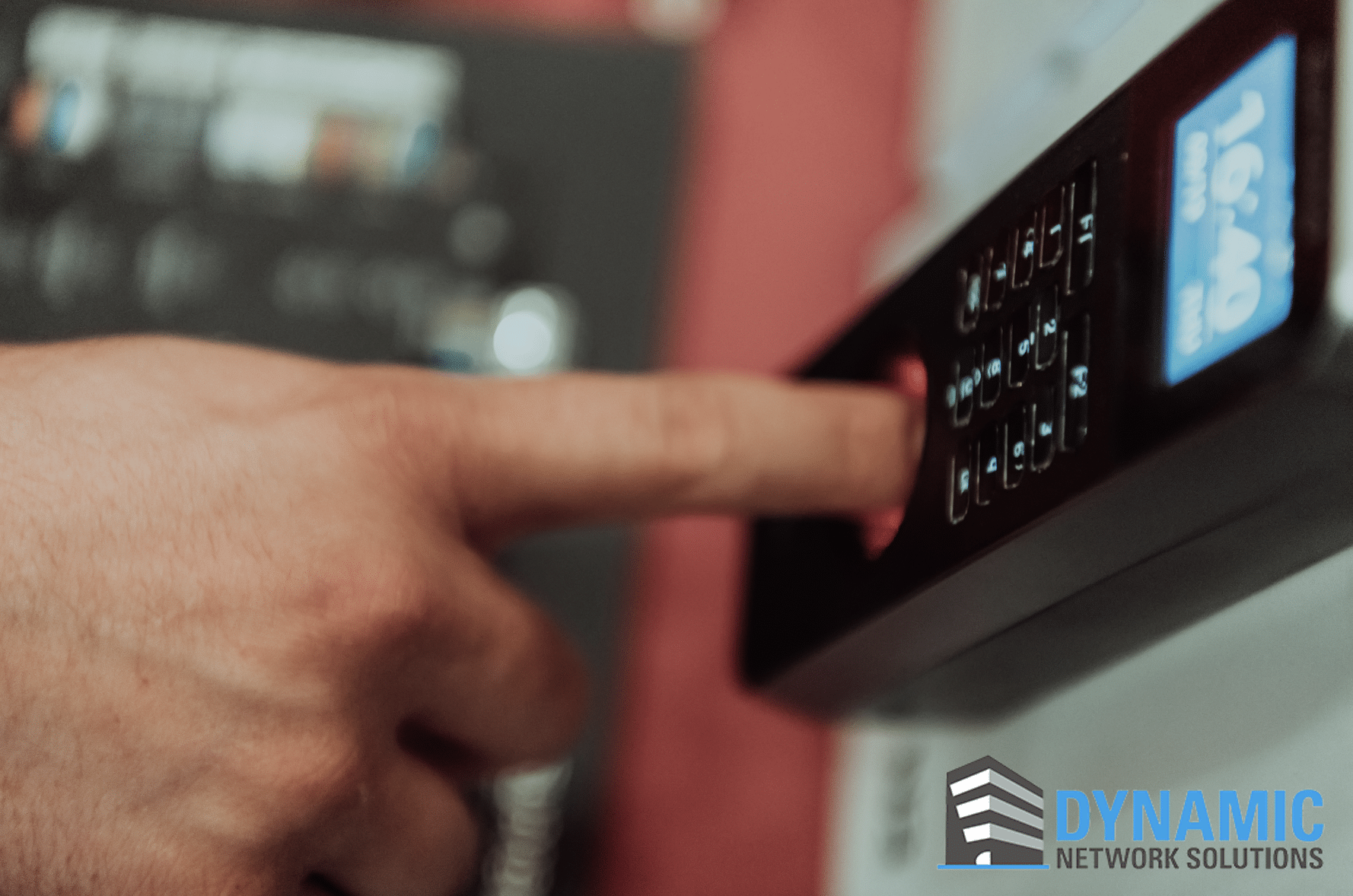
The unprecedented events of the past few years, including the global pandemic, have acted as catalysts for rapid technological advancement and adoption. In this environment, ACS have not just been tools for securing physical and digital entry points, but also for ensuring health and safety. As we approach 2024, it is clear that the trends in access control systems are gravitating towards solutions that are smart, seamless, and robust against the backdrop of an increasingly complex security landscape.
Let’s explore the cutting-edge trends set to define access control systems in 2024. We will delve into the breakthroughs and developments that are expected to dominate the field, from the integration of sophisticated biometric authentication to the expansive adoption of cloud-based platforms. For organizations looking to safeguard their operations, understanding these trends will be vital in building a resilient and future-proof security infrastructure. Join us as we embark on this journey into the future of access control.
Integration of Biometric Authentication
Biometrics have been a game-changer in personal and organizational security frameworks, and their integration into access control systems is becoming increasingly sophisticated. As we look to 2024, the rise of advanced biometric technologies is inevitable, setting new benchmarks for security and user experience.
- Advanced Biometric Technologies The realm of biometrics is set to expand beyond fingerprints and facial recognition. We’re anticipating the integration of more secure and less intrusive forms such as iris scanning, voice recognition, and even gait analysis. These biometric identifiers are nearly impossible to replicate, significantly reducing the likelihood of unauthorized access and enhancing the overall security of the system.
- Enhanced Biometric Sensors and Algorithms The sensors and algorithms underpinning biometric systems are undergoing rapid improvements. Future sensors are expected to be more resilient to spoofing attempts and capable of delivering accurate results with even quicker turnaround times. Simultaneously, the algorithms are becoming more sophisticated, with better false acceptance and rejection rates, ensuring that access is granted only to the right individuals without causing unnecessary delays.
- Mobile Biometrics for Access Control Mobile devices are poised to become key players in biometric access control. Utilizing built-in sensors, smartphones and wearable devices can authenticate identity with a simple scan or voice command. This trend not only elevates convenience but also reinforces security by leveraging the processing power and encrypted environments within modern devices.
- Privacy and Security Considerations As biometric data is inherently personal, its integration into ACS raises important privacy and security concerns. The trend will be towards creating systems that store and process data in a manner that complies with global privacy standards. Encryption of biometric data, both at rest and in transit, along with strict access controls and regular security audits, will be central to maintaining user trust and fortifying systems against breaches.
Biometric authentication systems are becoming the cornerstone of modern access control solutions. Their ability to offer a unique combination of security, speed, and user convenience makes them an indispensable trend in the ACS landscape of 2024. However, as these systems become more widespread, balancing security with user privacy will remain a critical consideration.
Mobile Access Control Systems
As we move into 2024, mobile access control systems are set to dominate the landscape, with convenience and flexibility being the key driving forces behind their adoption.
- Transition from Traditional ID Cards to Mobile Devices Traditional physical ID cards are giving way to smartphones, which are becoming the new keys to access workspaces and secure areas. With a majority of the population now owning a mobile device, the switch to mobile access presents a logical step forward. The trend includes the use of digital credentials that can be easily managed and revoked, enhancing security while reducing the environmental impact and costs associated with plastic cards.
- Use of Bluetooth, NFC, and QR Codes for Access Near Field Communication (NFC), Bluetooth Low Energy (BLE), and QR codes are becoming standard technologies for mobile access control. NFC and BLE allow for seamless and secure communication between the mobile device and the access control system, while QR codes provide a simple and cost-effective alternative. These technologies support touchless access, which is not just convenient but also hygienic—a significant consideration in the post-pandemic world.
- Advantages of Mobile Systems Mobile systems are revolutionizing access control by offering unparalleled convenience. Users no longer need to carry multiple access cards; instead, they can gain entry through devices that are an integral part of their daily lives. Moreover, mobile access solutions are inherently adaptable, allowing for easy updates and the implementation of temporary access rights, which is ideal for visitors or contractors.
- Integration with IoT and Smart Building Technologies The integration of mobile access with Internet of Things (IoT) and smart building technologies is a key trend. As buildings become smarter, mobile devices can interact with various systems, not only to grant access but also to personalize the user experience—adjusting lighting, temperature, and even workstation settings. This integration streamlines operations, enhances user comfort, and can lead to energy savings by optimizing resource use.
Mobile access control systems are rapidly becoming the standard, providing a secure and convenient way to manage entry to facilities. Their integration with broader building management systems underscores the move towards more intelligent and user-friendly environments. As this trend continues, the way we interact with our workplaces and secure spaces is set to become more streamlined and intuitive than ever before.
Artificial Intelligence and Machine Learning in Access Control

- AI-Powered Anomaly Detection and Predictive Analytics AI algorithms can now analyze access data to identify patterns and detect anomalies. This predictive approach to security can foresee potential breaches or unauthorized access attempts before they occur, allowing preemptive action. Machine learning models constantly improve their detection capabilities as they process more data, leading to a dynamic system that adapts to new threats.
- Smart Access Control Systems Access control systems are growing smarter with the integration of AI. They are beginning to learn from user behavior, recognizing regular patterns and adjusting controls accordingly. For instance, a smart access system might detect a user’s working hours and only grant access during those times, adding a layer of security while maintaining convenience.
- AI-Powered Surveillance and Real-Time Threat Assessment Coupling AI with video surveillance in access control can provide real-time threat assessments. AI can analyze video feeds to identify unauthorized individuals or suspicious behavior and can be integrated with access control to lock down areas or alert security personnel automatically. These systems can be invaluable in high-security areas, offering a rapid response to potential threats.
Cloud-Based Access Control Solutions
Cloud-based access control is a key trend that will continue to grow into 2024, offering solutions that are both scalable and accessible from anywhere.
- Shift to Cloud-Based Systems The trend is a shift away from traditional on-premises access control infrastructures to cloud-based platforms. These systems offer greater flexibility and can be updated or scaled as needed without significant hardware investments. They also enable access control managers to modify permissions in real-time from any location.
- Benefits of Cloud-Based Access Control Scalability is a major benefit of cloud-based systems, allowing for an unlimited number of users and entry points to be added without performance degradation. Moreover, these systems can integrate with other cloud services like HR management and video surveillance, streamlining multiple aspects of organizational security and operations.
- Security and Reliability Concerns While cloud-based systems are convenient, their security and reliability are often questioned. However, with advancements in encryption and robust cybersecurity measures, cloud-based access control systems are proving to be as secure as traditional options, if not more so. They offer the added advantage of regular updates to safeguard against the latest threats.
Contactless and Frictionless Systems
In the aftermath of a health-conscious era, the demand for contactless and frictionless access control systems has skyrocketed, a trend that will only strengthen by 2024.
- Demand for Touchless Access Control The heightened awareness of health issues has spurred the demand for systems that minimize touchpoints. Contactless access control, from gesture recognition to facial recognition systems that work with masks on, will become the norm in environments ranging from offices to public transport systems.
- Technologies Enabling Frictionless Access Control Innovations like LiDAR and advanced motion sensors are paving the way for truly frictionless access control, where the user’s presence and identity are authenticated without any action required on their part. This seamless approach can greatly enhance the user experience while maintaining high security standards.
- Case Studies of Frictionless Systems Real-world implementations of frictionless systems are already showing promising results. Offices with turnstiles that open as recognized employees approach or hotels where guests can access their rooms without stopping at the front desk provide a glimpse into the potential of these technologies.
Final Thoughts
 As we approach 2024, the trends in access control point to a future where security is more integrated, intelligent, and user-centric than ever before. The integration of biometrics, mobile technology, AI, cloud-based solutions, and contactless systems is not just enhancing security but also redefining the user experience. For businesses and security professionals, staying ahead of these trends is not just about adopting new technologies but about embracing a new philosophy of access control that prioritizes flexibility, efficiency, and adaptability. As these technologies become increasingly mainstream, they will set new standards for what is considered secure and accessible, shaping the future of physical security in the process.
As we approach 2024, the trends in access control point to a future where security is more integrated, intelligent, and user-centric than ever before. The integration of biometrics, mobile technology, AI, cloud-based solutions, and contactless systems is not just enhancing security but also redefining the user experience. For businesses and security professionals, staying ahead of these trends is not just about adopting new technologies but about embracing a new philosophy of access control that prioritizes flexibility, efficiency, and adaptability. As these technologies become increasingly mainstream, they will set new standards for what is considered secure and accessible, shaping the future of physical security in the process.




